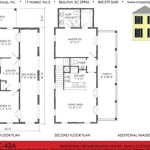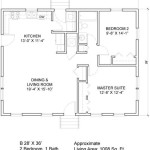A two-story tiny house is a small, two-level home designed to maximize space and provide comfortable living in a compact footprint. These homes typically range in size from 200 to 500 square feet and are designed with a variety of layouts to accommodate different needs and lifestyles.
Tiny houses are becoming increasingly popular among individuals and families looking to downsize their living space, reduce their environmental impact, and live a more affordable life. These homes are also an attractive option for homeowners with limited land space or those who wish to live in urban or suburban areas where larger homes may not be feasible.
There are many important points to consider when designing a two-story tiny house, including:
- Layout
- Space planning
- Storage
- Loft design
- Stairs
- Natural light
- Ventilation
- Energy efficiency
- Building materials
By carefully considering these factors, you can create a two-story tiny house that is both functional and comfortable.
Layout
The layout of a two-story tiny house is crucial to maximizing space and creating a comfortable living environment. The most common layout is to have the kitchen, living room, and bathroom on the first floor, with the bedroom(s) and/or loft on the second floor. This layout provides a clear separation between the living and sleeping areas, and it allows for a more spacious and open feel on the first floor.
Another popular layout is to have the kitchen and living room on the first floor, with the bedroom(s) and bathroom on the second floor. This layout is ideal for those who want a more private sleeping area, and it also allows for more natural light to enter the living space.
No matter which layout you choose, it is important to carefully consider the placement of furniture and appliances. You want to make sure that there is enough space to move around comfortably, and that all of your essential items are within easy reach.
Here are some additional tips for maximizing space in a two-story tiny house:
- Use vertical space wisely. Install shelves and cabinets on walls, and use lofts to create additional sleeping or storage space.
- Choose furniture that is multifunctional. For example, a sofa that can also be used as a bed, or a coffee table that can also be used as a dining table.
- Keep your belongings organized. Use baskets, bins, and other storage solutions to keep your belongings tidy and out of sight.
Space planning
Space planning is the process of arranging the interior of a tiny house to maximize space and functionality. This is especially important in a two-story tiny house, where every square foot counts. Here are some tips for space planning in a two-story tiny house:
- Define your needs. Before you start planning the layout of your tiny house, take some time to think about how you will use the space. What are your essential needs? What activities do you want to be able to do in your home? Once you have a good understanding of your needs, you can start to plan the layout of your home.
- Create a floor plan. A floor plan is a scaled drawing of your tiny house that shows the layout of the rooms, furniture, and appliances. This is a helpful tool for visualizing the space and making sure that everything fits together. There are many different software programs that you can use to create a floor plan, or you can simply draw one by hand.
- Use vertical space. One of the best ways to maximize space in a tiny house is to use vertical space. This means installing shelves and cabinets on walls, and using lofts to create additional sleeping or storage space. You can also use vertical space to create a more open and airy feel in your home.
- Choose multifunctional furniture. Multifunctional furniture is a great way to save space in a tiny house. For example, you could choose a sofa that can also be used as a bed, or a coffee table that can also be used as a dining table.
By following these tips, you can create a two-story tiny house that is both functional and comfortable.
Storage
Storage is an important consideration in any home, but it is especially crucial in a tiny house where space is limited. Here are some tips for maximizing storage in a two-story tiny house:
- Utilize vertical space. One of the best ways to maximize storage in a tiny house is to utilize vertical space. This means installing shelves and cabinets on walls, and using lofts to create additional storage space. You can also use vertical space to create a more open and airy feel in your home.
- Choose multifunctional furniture. Multifunctional furniture is a great way to save space in a tiny house. For example, you could choose a sofa that can also be used as a bed, or a coffee table that can also be used as a dining table.
- Use under-bed storage. Under-bed storage is a great way to store bulky items that you don’t need to access on a regular basis. You can purchase under-bed storage containers or simply use cardboard boxes.
- Install hooks and shelves. Hooks and shelves are a great way to store small items that you need to access on a regular basis. You can install hooks on the back of doors or on walls, and you can install shelves in closets or other unused spaces.
By following these tips, you can create a two-story tiny house that is both functional and comfortable.
Loft design
The loft is an important part of a two-story tiny house. It can provide additional sleeping space, storage space, or even a home office. Here are some tips for designing a loft in a two-story tiny house:
- Choose the right size. The size of the loft will depend on how you plan to use it. If you need a sleeping loft, it should be large enough to accommodate a bed and a dresser. If you need a storage loft, it should be large enough to store your belongings. If you need a home office loft, it should be large enough to accommodate a desk and a chair.
- Choose the right location. The location of the loft will depend on the layout of your tiny house. If you want a sleeping loft, it should be located in a private area of the house. If you want a storage loft, it can be located in a more public area of the house. If you want a home office loft, it should be located in a quiet area of the house.
- Choose the right materials. The materials you use to build the loft will depend on your budget and your personal preferences. You can use wood, metal, or even fabric to build a loft. Wood is the most common material used to build lofts, but it is also the most expensive. Metal is a more durable material than wood, but it is also more expensive. Fabric is the least expensive material to use to build a loft, but it is also the least durable.
- Choose the right design. The design of the loft will depend on the style of your tiny house. If you have a modern tiny house, you may want to choose a loft with a modern design. If you have a rustic tiny house, you may want to choose a loft with a rustic design.
By following these tips, you can design a loft that is both functional and stylish.
Stairs
Stairs are an important part of a two-story tiny house. They provide access to the second floor, and they can also be used to create additional storage space. Here are some things to consider when designing stairs for a two-story tiny house:
Size and shape: The size and shape of the stairs will depend on the layout of your tiny house. If you have a small tiny house, you will need to choose stairs that are narrow and compact. If you have a larger tiny house, you can choose stairs that are wider and more spacious.
Material: The material of the stairs will depend on your budget and personal preferences. Wood is the most common material used to build stairs, but it is also the most expensive. Metal is a more durable material than wood, but it is also more expensive. Fabric is the least expensive material to use to build stairs, but it is also the least durable.
Design: The design of the stairs will depend on the style of your tiny house. If you have a modern tiny house, you may want to choose stairs with a modern design. If you have a rustic tiny house, you may want to choose stairs with a rustic design.
Storage: Stairs can be used to create additional storage space in a tiny house. You can install drawers or shelves under the stairs, or you can use the space under the stairs to store bulky items.
Natural light
Natural light is an important consideration in any home, but it is especially crucial in a tiny house where space is limited. Natural light can help to make a tiny house feel more spacious and inviting, and it can also improve your mood and well-being.
There are many ways to maximize natural light in a two-story tiny house. One way is to install large windows on the first and second floors. Another way is to use skylights to bring light into the interior of the house. You can also use light-colored paint and finishes to reflect light and make the space feel more open and airy.
Here are some specific tips for maximizing natural light in a two-story tiny house:
- Install large windows on the first and second floors. Windows are the best way to bring natural light into a home. When choosing windows for your tiny house, opt for large windows that will allow plenty of light to enter. If possible, install windows on both the first and second floors to maximize the amount of natural light in your home.
- Use skylights to bring light into the interior of the house. Skylights are a great way to bring natural light into the interior of a home, even if there are no windows on a particular wall. Skylights can be installed in any room of the house, but they are especially effective in kitchens, bathrooms, and other rooms that don’t have a lot of natural light.
- Use light-colored paint and finishes to reflect light and make the space feel more open and airy. Dark colors absorb light, while light colors reflect light. When choosing paint and finishes for your tiny house, opt for light colors that will help to reflect light and make the space feel more open and airy.
By following these tips, you can maximize natural light in your two-story tiny house and create a space that is both functional and inviting.
Ventilation
Ventilation is an important consideration for any home, but it is especially crucial in a tiny house where space is limited. Proper ventilation helps to circulate air, remove moisture, and reduce the risk of mold and mildew. There are a number of different ways to ventilate a tiny house, including:
- Windows and doors. Opening windows and doors is the simplest and most effective way to ventilate a tiny house. When the weather is nice, open the windows and doors to allow fresh air to circulate. You can also use a fan to help circulate the air.
- Exhaust fans. Exhaust fans are installed in kitchens and bathrooms to remove moisture and odors. They are a great way to improve ventilation in these areas, especially when cooking or showering.
- Air vents. Air vents are installed in the walls and ceilings of a tiny house to allow air to circulate. They are especially important in areas that are prone to moisture, such as the bathroom and kitchen.
- Passive ventilation. Passive ventilation is a system that uses natural forces to circulate air. For example, a solar chimney uses the sun’s heat to create a draft that draws air through the house.
By following these tips, you can ensure that your tiny house is properly ventilated and that the air quality is good.
Energy efficiency
Energy efficiency is an important consideration for any home, but it is especially crucial in a tiny house where space is limited. Tiny houses are often built with energy-efficient features to reduce energy consumption and save money on utility bills. Some common energy-efficient features in tiny houses include:
- Insulation: Insulation is one of the most important energy-efficient features in a tiny house. It helps to keep the house warm in the winter and cool in the summer, reducing the need for heating and cooling. Tiny houses are typically insulated with fiberglass, cellulose, or spray foam insulation.
- Windows and doors: Windows and doors are another important factor in energy efficiency. ENERGY STAR-rated windows and doors are designed to be energy-efficient, meaning they help to keep the heat in during the winter and the cool air in during the summer. Tiny houses typically have small windows and doors to reduce heat loss.
- Appliances: Energy-efficient appliances can also help to reduce energy consumption in a tiny house. Look for appliances with the ENERGY STAR label, which indicates that they meet certain energy-efficiency standards. Energy-efficient appliances typically use less energy to operate, which can save you money on your utility bills.
- Lighting: LED lighting is the most energy-efficient type of lighting available. LED bulbs use up to 80% less energy than traditional incandescent bulbs, and they last much longer. Tiny houses typically use LED lighting throughout the house to reduce energy consumption.
By incorporating these energy-efficient features into your tiny house, you can reduce your energy consumption and save money on your utility bills.
Building materials
The choice of building materials is an important consideration for any home, but it is especially crucial for a tiny house where space is limited. The materials you choose will affect the weight, durability, and energy efficiency of your home. Here are some of the most common building materials used for tiny houses:
- Wood: Wood is a popular choice for tiny houses because it is lightweight, durable, and relatively inexpensive. Wood is also a natural insulator, which can help to reduce energy costs. However, wood is susceptible to rot and decay, so it is important to choose a type of wood that is resistant to these problems.
- Steel: Steel is a strong and durable material that is often used for the frames of tiny houses. Steel is also fire-resistant, which can be an important safety feature. However, steel is more expensive than wood, and it can be more difficult to work with.
- Concrete: Concrete is a strong and durable material that can be used for the walls and foundations of tiny houses. Concrete is also fire-resistant and pest-resistant. However, concrete is heavy and can be difficult to work with. It is important to choose a concrete mix that is designed for tiny houses.
- Shipping containers: Shipping containers are a popular choice for tiny houses because they are strong, durable, and relatively inexpensive. Shipping containers are also easy to transport and assemble. However, shipping containers can be hot and humid in the summer and cold in the winter, so it is important to insulate them properly.
The choice of building materials for your tiny house will depend on your budget, your needs, and your personal preferences. It is important to do your research and choose materials that are appropriate for your climate and your lifestyle.










Related Posts








